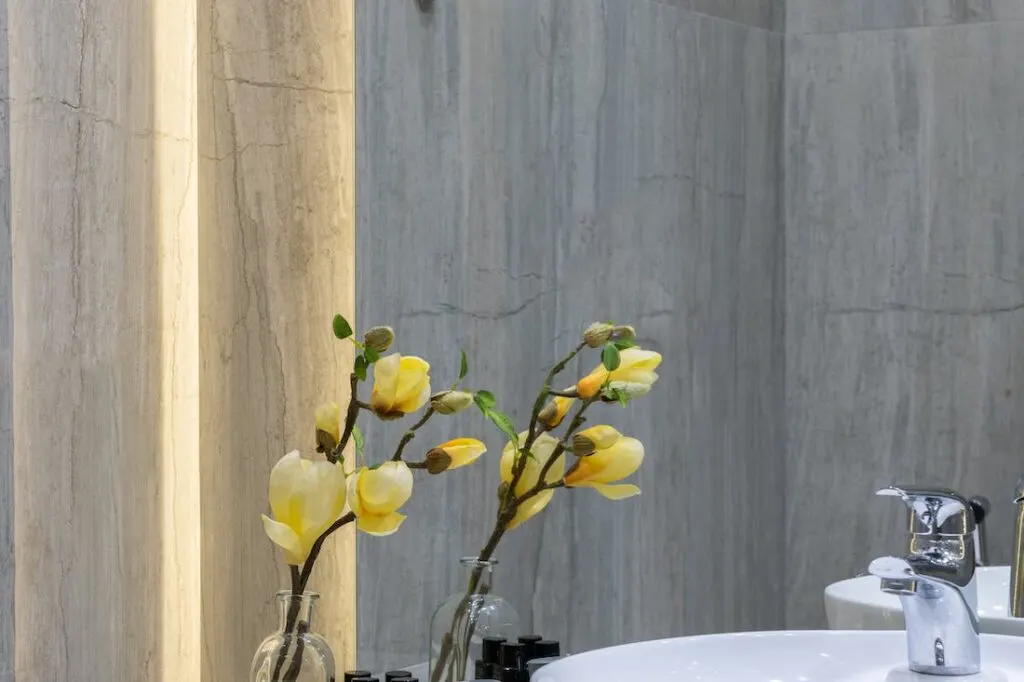From their time-honored use in the construction of ancient monuments to modern-day applications, Italian marble and granite have been revered as art forms for centuries.
From cathedrals like St. Peter’s Basilica to Renaissance works of art crafted from these luxurious stones – Italian marble and granite are both beautiful and practical materials that reflect a rich heritage of craftsmanship.

These stones continue to be an integral component of modern architecture, finding their way into luxurious homes around the world. Today we will explore these unique materials further – from their origin to their restoration methods, to modern-day applications – enabling you to enjoy them and bring out their unique character in your home.
A Brief History of Italian Marble and Granite Quarries
The long history of Italian marble and granite quarries is a testament to the beauty and versatility of natural stone. Since ancient times, Italian quarries have been renowned for producing some of the world’s finest marble and granite, coveted for their unique patterns, colors, and durability.
Italian marble has been used in some of the most famous works of art and architecture in history, including Michelangelo’s David and the Taj Mahal. Today, this natural stone continues to be in high demand, prized for its natural beauty, longevity, and easy maintenance.
The story of Italian marble and granite quarries is one of tradition, craftsmanship, and unparalleled quality.
Iconic Uses of Italian Stone in Architecture
One of the most remarkable uses of Italian marble can be seen in Florence Cathedral with its intricate patterning consisting entirely of Carrara Marble sourced from Northern Tuscany. Another example is the Trevi Fountain located in Rome which features stunning sculptures carved from white Travertine Marble blocks for an exquisite effect.
Italian Granite too has provided raw materials for countless structures including St. Peter’s Basilica (Vatican City) which is made up of several different types including Rosso Francia Granite imported from France as well as Rosa Asiago Granite from Italy itself.
The Pantheon also benefits greatly from this same type of stone while Sicily’s Monreale Cathedral boasts an extensive granite facade that creates a truly spectacular sight against the bright blue sky.
A few noteworthy examples include Pisa’s Leaning Tower whose exterior comprises pink-hued marbles along with gray granites, as does Palazzo Vecchio in Florence built between 1299 and 1314 featuring off-white marbles along its façade walls accompanied by dark brown veiny granites around window sills & door frames.

The Variety and Versatility of Italian Stone
Italian marble and granite have long been regarded for their unparalleled beauty and versatility in design. The vast array of colors and patterns found within these materials is a testament to their unparalleled natural beauty.
Carrara marble, with its distinctive, crystalline veining, adds an air of sophistication and elegance to any space. Botticino, with its creamy beige hue and delicate swirls, imparts a sense of warm and inviting tranquility. Meanwhile, Trani, with its clean, crisp appearance and smooth surface, provides a sleek and modern aesthetic.
The possibilities that these exquisite materials offer are endless, and designers and architects continue to experiment with their creative potential with astounding results.
Crafting Masterpieces With Italian Stone
From the grandeur of Michelangelo’s David to the intricate details of Bernini’s sculptures, Italian marble and granite have played a vital role in the creation of some of the most impressive works of art in human history.
Whether you’re a connoisseur of sculpture or simply appreciate the elegance of fine craftsmanship, learning about the history and significance of Italian marble and granite can offer a newfound appreciation for the artistry and skill that goes into the creation of each unique piece.
Modern Applications and Sustainable Practices
Italian marble and granite remain integral in design today, with their timeless beauty standing the test of time throughout historic monuments, architectural landmarks, and residential buildings. From majestic cathedrals to luxurious palaces, Italian marble and granite have been used extensively in breathtaking architecture.
Fortunately for those looking to bring such beauty into their modern designs, sustainable practices can ensure that these resources are accessible without depleting our natural reserves.
In order to be certified sustainable for use in design projects, Italian marble and granite must meet strict standards specific to each individual material type as well as certain environmental factors such as water source management plans and air emissions monitoring programs.
By following these guidelines closely throughout the entire process – from quarrying to transportation – organizations ensure that sustainability remains a top priority every step of the way.

Learn Tips for Proper Care, Maintenance, and Renovation
Taking proper care of Italian marble and granite installations is essential to preserving the beauty of your home or office for years to come.
Cleaning tip: it is important to regularly clean your marble or granite installation with a cleaning product specifically designed for these surfaces in order to protect them from damage.
Maintenance tip: performing regular maintenance on your stone surfaces will help extend their lifespan by protecting them from dirt and debris accumulation which can cause scratches or chips over time.
Protection tip: installing sealants like polyurethane-based impregnators over the stone will also help protect against stains while making cleanup easier in the long run.
Restoration: Marble itself is very porous so you need specialized equipment such as diamond abrasives in order to restore its shine and repair light damage from spills or accidents–especially when dealing with countertops that take frequent abuse!
Using professional services may be more expensive but rest assured knowing you’re getting expert advice backed by extensive experience working with these materials – many companies offering restoration services also provide detailed instruction sheets outlining how they achieve such great results!
